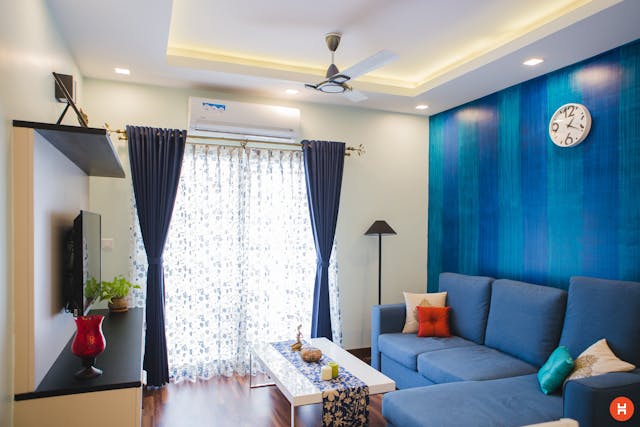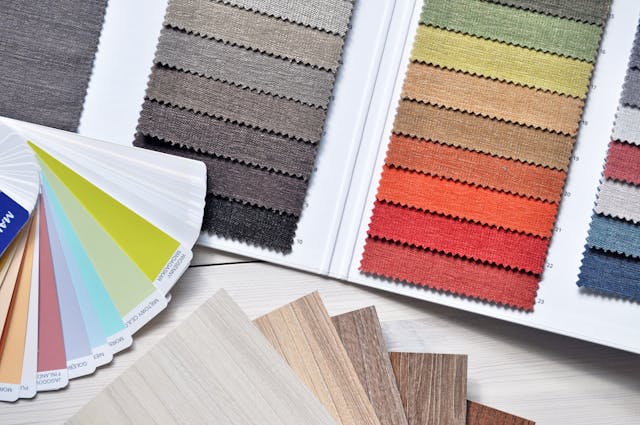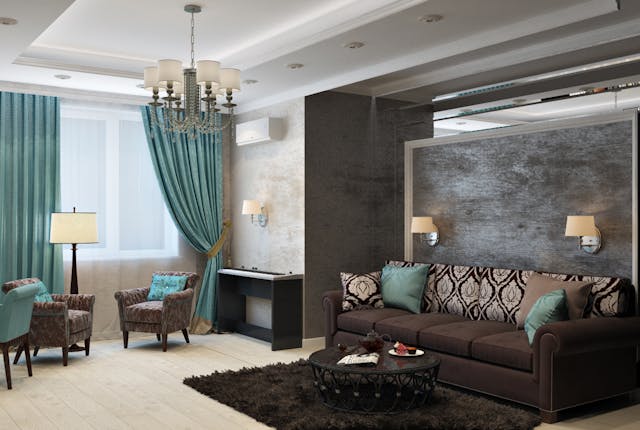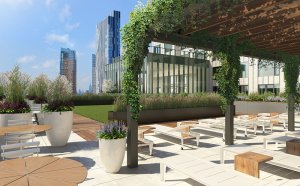
Transforming Your Living Space
The Principles of Effective Interior Design
Key Takeaways:
- Interior design is an expression of personal taste balanced with design principles.
- Color theory significantly impacts the emotional and psychological environment of a space.
- Clever use of patterns, textures, and space can dramatically improve the function and feel of a room.
- Technology integration and eco-friendly considerations are changing the future of interior design.
- The harmony of DIY efforts and professional expertise optimizes the design process.
Table of Contents:
- Understanding the Basics of Interior Design
- Color Theory and Its Impact on Interior Spaces
- Maximizing Space with Smart Design Choices
- Incorporating Personal Style While Following Design Principles
- The Role of Textures and Patterns in Interior Design
- Solutions for Common Interior Design Challenges
- Professional Services Versus DIY Interior Design
Interior design is a powerful medium through which individuals can express their style and improve their quality of life. From how natural light dances on a room's surface to the alignment of furniture for optimal comfort and style, each aspect of design elements plays a fundamental role in transforming a living space. Moreover, an effective interior design can address functional needs while creating an aesthetically pleasing environment. As we explore the basic principles of interior design, we may find inspiration from the tailored approach used by experts in the field, such as those specializing in interior design for kitchen St Louis.
Understanding the Basics of Interior Design
Interior design is not just about choosing colors and furniture; it is about creating a harmonious space that reflects the inhabitant's personality and meets their needs. The fundamental principles—balance, rhythm, and scale—are crucial for crafting a cohesive interior. Balance creates a sense of stability, whether symmetrical or asymmetrical, while rhythm provides visual interest by repeating patterns or colors. In order to prevent a haphazard or cluttered look, scale and proportion guarantee that the size of the furniture and accessories is suitable for the space. Mastering these principles is the first step toward creating an inviting and functional living space.

Photo by Pixabay
Color Theory and Its Impact on Interior Spaces
Color is the most dynamic element of interior design. The colors we choose for our walls, textiles, and accents can create a mood, define spaces within our homes, and even influence our energy levels and state of mind. Introducing warm colors like reds and yellows can add vibrancy and warmth, while cool colors like blues and greens can be calming. Understanding color theory can also guide homeowners in choosing complementary color schemes that create visual harmony.
Maximizing Space with Smart Design Choices
The way space is utilized within a home can significantly affect its functionality and aesthetics. Intelligent design choices help maximize usable space and transform the feel of even the most confined areas. For instance, using mirrors to reflect light can make rooms appear larger, while clever storage solutions minimize clutter. Multipurpose furniture, such as ottomans with storage or sleeper sofas, can play dual roles in a small living area. Lighting also plays a critical role; it can highlight design features and create the illusion of expansiveness.
Incorporating Personal Style While Following Design Principles
Your home should reflect your identity and be a collection of what you love. Incorporating personal style into home decor does not mean disregarding design principles; instead, it's about weaving your narrative into the space. Family heirlooms, art collections, or even a favored texture or color can be starting points for design. It takes skill to balance self-expression with aesthetic principles, but the most successful interiors resonate with their inhabitants' personalities.

Photo by Vika Glitter from Pexels
The Role of Textures and Patterns in Interior Design
Textures and patterns add depth and dimension to a room, engaging the senses and adding character. A smooth, glossy surface can impart a sleek, modern look, while a plush, nubby texture can convey comfort and warmth. Patterns used thoughtfully can unify a design scheme or create a focal point in a room, guiding the eye and adding movement. The key is balance—too much texture or pattern can be overwhelming, so it's crucial to distribute these elements thoughtfully throughout a space.
Solutions for Common Interior Design Challenges
Each home has its own set of design challenges, whether dealing with limited natural light, an open-plan space that needs definition, or making a small room appear larger. Creative solutions can address these challenges, such as painting walls in light-reflecting hues, using shelving units or area rugs to define spaces, or choosing scale-appropriate furniture that doesn't overcrowd the room. The most effective solutions often combine form and function, enhancing the usability of the space while also embellishing its appearance.
Professional Services Versus DIY Interior Design
The realm of interior design is vast, and while many homeowners are embracing the DIY approach to decorating, there are times when the expertise of a professional can provide untold value. For instance, complex projects like kitchen renovation may benefit from expert design knowledge to ensure that beauty is matched by practicality and efficiency. Understanding the complexity of your project and knowing when to seek professional advice can help you avoid costly mistakes and ensure a result you're pleased with.
Photo by HomeLane.com from Pexels
Share this Post
Related posts
Building Construction related to the Fire Service
This textbook matches the course outline and objectives identified by the National Fire Academy s Fire and Emergency Services…
Read MoreIndustrial Maintenance Technology
Industrial Maintenance Mechanic I [3] MANF 211 - Industrial Maintenance Mechanic I 3-4-3 Basic principles and skills of…
Read More









